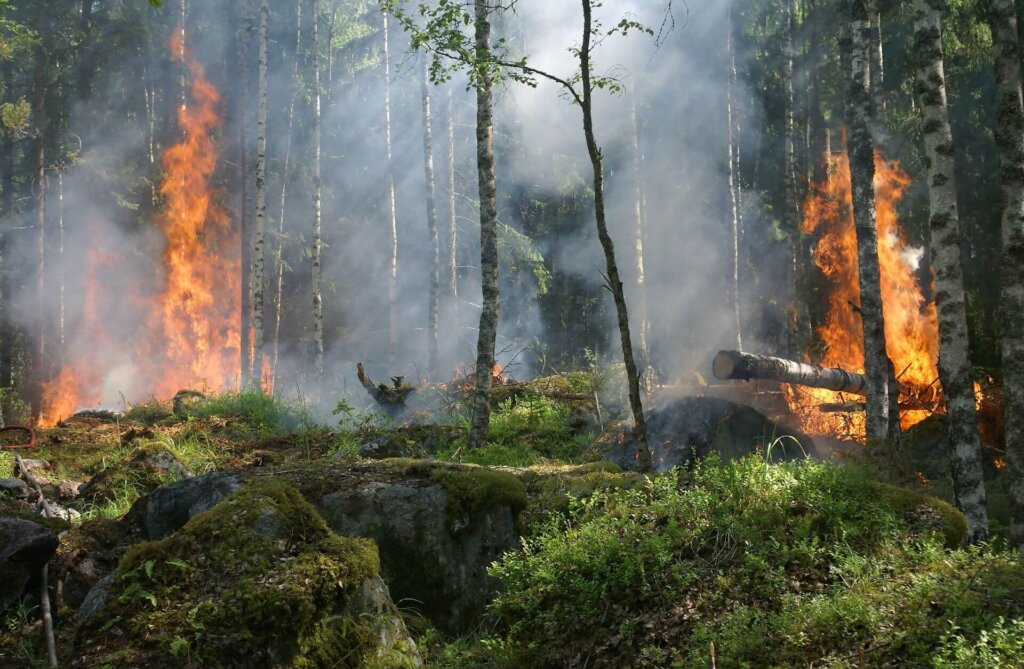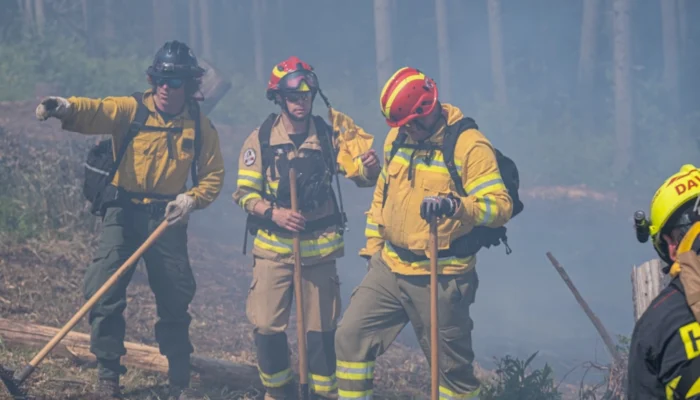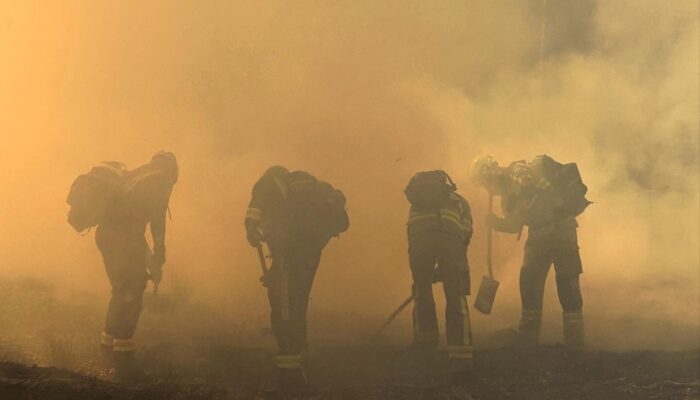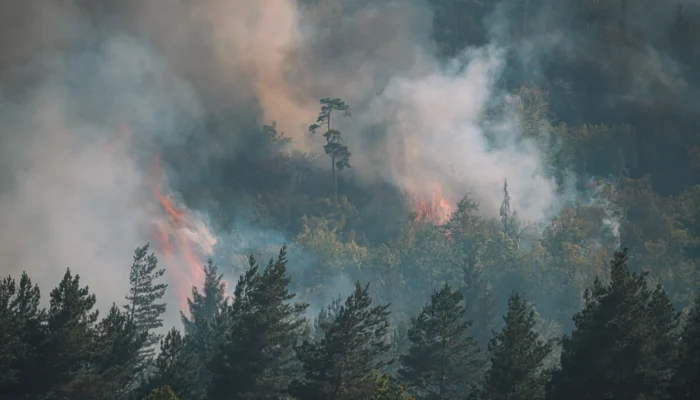With wildfire seasons becoming longer and more intense all over the world, understanding what causes wildland and forest fires and what we can do to prevent them is more important than ever before. Even though it’s a topic that’s extensively covered by the news media every year, many misconceptions about wildfires and their leading causes and effects still persist.
What makes wildfires different from regular fires? Are they caused by weather conditions, climate change, or human activities? Is there anything we can do, individually or as a society, to prevent wildland fires? We’ll address these questions in the article below to identify and understand wildfire hazards and causes.
.
Table of Contents
ToggleWhat Is a Wildfire?
.
Wildfires are fires that occur in wildland areas (e.g., forests or grasslands) and are unplanned and uncontrolled. It’s important to point out that not every forest fire can, or should, be classified as a wildfire. For example, some fires are planned (these are also known as controlled or prescribed burnings) and are one of the forest management practices that can actually reduce the wildfire risk.
.
The Most Common Causes of Wildfires
.
What causes wildfires? They can occur due to either natural phenomena or human activities. Thanks to the data gathered by forest and firefighting services over the years, we can quite accurately determine the most common causes for each category. At the same time, however, it’s important to keep in mind that in some cases identifying the exact cause is simply not possible.
🔗 Not every smoke means wildfire – Not every smoke plume rising in the landscape over undeveloped areas means a wildfire. It could just as well be smoke from controlled burns, which paradoxically are a crucial tool in preventing catastrophic fires and protecting our ecosystems.
.
Human-Caused Wildfires
.
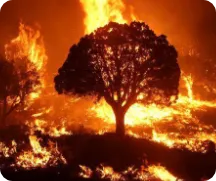
Even a quick look at wildfire statistics clearly shows that collectively, as a society, we don’t have much to be proud of. The unpleasant reality is that most wildfires are human-caused. According to the US Forest Service, as much as 85% of all wildland fires in the United States can be linked to human activity.
We can distinguish two main types of human-caused wildland fires:
- wildfires caused by deliberate acts of arson,
- wildfires caused by carelessness and negligence (e.g., discarded cigarettes, unattended campfires, fallen power lines, debris burning, or using machinery or equipment that can create sparks).
.
Unfortunately, while intentional arson poses a serious threat, there’s not much we can do about it as individuals other than watch out for signs of smoke and fire and report them right away. But learning more about what causes wildfires, acting responsibly, and avoiding unnecessary risks when visiting vulnerable areas is something each of us can do.
Here are a few examples of simple rules to keep in mind:
- If you notice any potential fire hazard (e.g., damaged power lines, smoke coming from a remote area), report it immediately to the appropriate authorities.
- Never leave discarded cigarettes behind. It’s best to avoid smoking in wildland and forest areas altogether or at least dispose of cigarette butts properly.
- Follow local regulations on burning debris, camping, and vehicle use in wildland areas.
- Never leave open fires unattended. Escaped embers can ignite another fire miles away.
.
Natural Causes of Wildfires
.
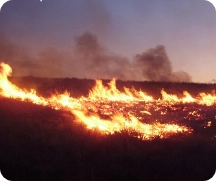
Natural wildfires seem to be rarer than human-caused ones in densely populated areas but tend to be the main type of wildfires in more remote locations. For example, around 60% of all wildland fires in Canada’s British Columbia had natural causes.
In this case, lightning strikes are the most common cause of wildfires. But not all lightning strikes have equal potential when it comes to becoming an ignition source for a wildfire. There are two types of lightning:
- Cold lightning has a shorter duration and usually isn’t able to generate enough heat to start a fire.
- Hot lightning contains continuing current and can last much longer than cold lightning. This type of lightning strikes is called hot lightning because of the intense heat it can generate. For this reason, it’s a common cause of fires.
.
Preventing natural wildfires is a difficult but not impossible task. It’s impossible to predict accurately where hot lightning will hit and whether it’ll create enough heat to ignite surrounding vegetation. It is, however, possible to significantly reduce the risk by implementing sustainable forest management strategies.
🔗 Wildfire Flowers: Resilient Blooms Rising from the Ashes – Discover which Flowers Often Appear After a Wildfire! Learn about the impact of Wildfires on Local Plant Communities. Read more now!
.
Climate Change and Wildland Fires
.
In this day and age, it’s impossible to talk about any subject related to weather conditions and the environment without mentioning climate change. As temperatures continue to rise and weather patterns become more unpredictable, wildfires are becoming even more frequent and destructive, leading to property damage, habitat destruction, and loss of lives. With the way things are going right now, we can expect wildfire seasons to get even longer or even lose their significance altogether as fires start to occur throughout the year and in places where they were previously rare or even unheard of.
Interesting Statistic: Lightning strikes account for a significant portion of wildfires, particularly in remote areas. For instance, in British Columbia, Canada, lightning is responsible for approximately 60% of wildfires
.
What Can Be Done to Prevent Wildfires?
.
There are many ways to prevent fires in wildland and forest areas or at least limit their effect on local habitats and communities. From individual actions we can take on our own to community initiatives and even legislative changes implemented at the state and national level, we have tools to fight this global crisis. But the most important step is to become aware of the problem and its sources. Understanding the leading causes of wildfires can help us introduce suitable preventive measures and significantly reduce the risk to save lives and assets. If you’d like to read more about effective ways to prevent wildfires or other wildfire-related topics, visit our blog!
Fires can have many different causes, but there’s one certain way to limit their devastating effect – quick detection and response to contain the flames before they get out of hand. Our automatic wildfire detection system uses innovative solutions, such as sensitive optical sensors and sophisticated algorithms, to detect early signs of fire and smoke from afar and notify you and others in the area by sending instant alerts about recognized fire hazards.
